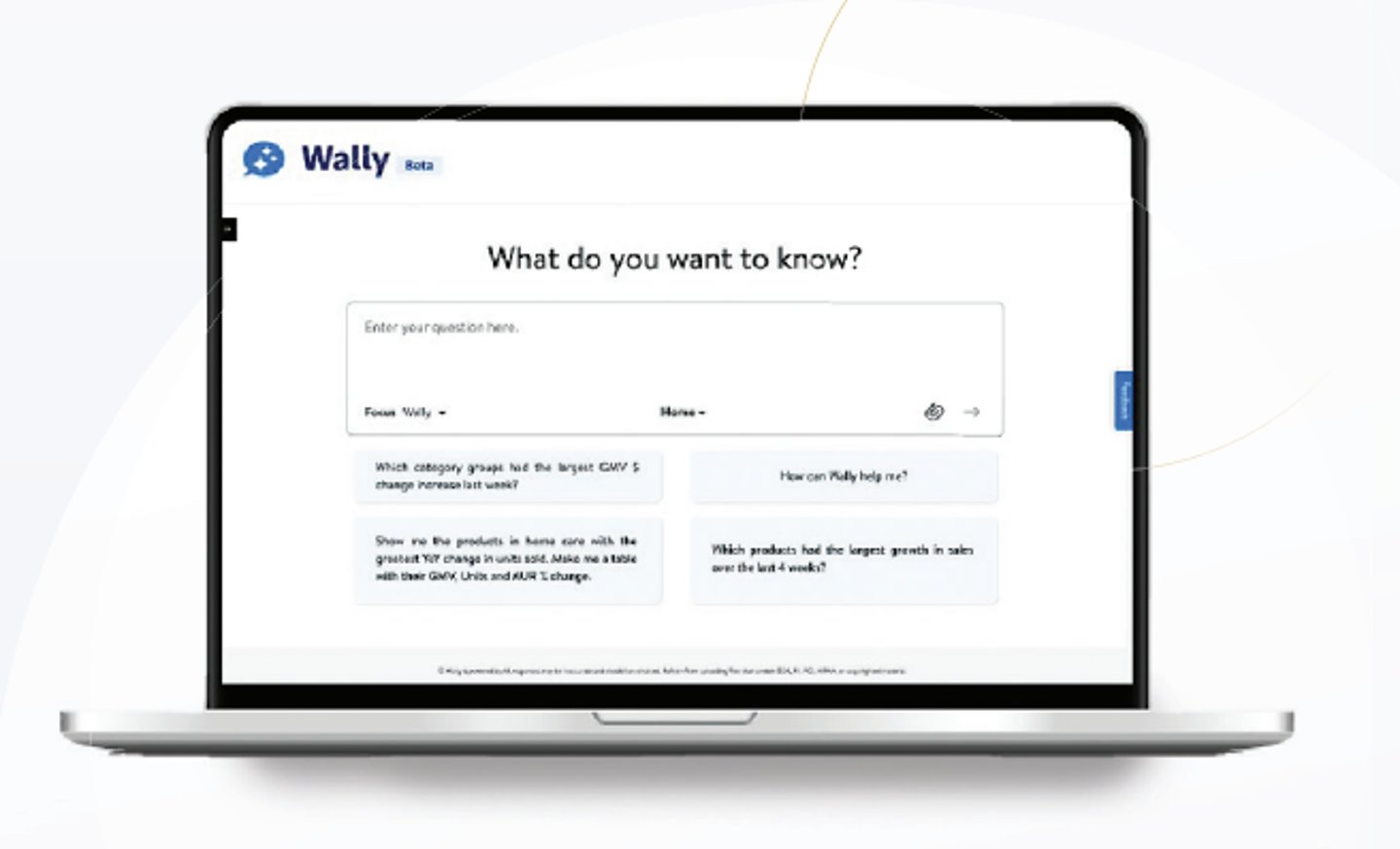Solutions seek to drive efficiencies, boost sales and enhance the customer experience.

Artificial intelligence and machine learning are now firmly embedded throughout the technology systems that businesses use to operate every day. Retailers are implementing AI-powered solutions in everything from chatbots that help provide customer service to data analytics tools that assist in category management.
In retail pharmacies specifically, analysts expect that AI and machine learning will increasingly be used to automate tasks, such as processing prescriptions and refill requests and analyzing patient data to identify potential drug interactions and dosage errors. Other AI applications could be used to help retailers provide support for medication adherence by generating automated follow-up messages, for example.
In general, retailers are looking at AI as a tool that can be leveraged to increase ef ciencies through automation, and to assist in decision-making based on the rapid analysis of extensive datasets.
Chuck Reynolds, managing director and partner in L.E.K. Consulting’s Boston office and a member of the firm’s digital practice, said retailers should be looking at AI beyond its ability to drive efficiencies and enhance customer experiences. While these may drive gains in the short term, they will likely soon become table stakes as other retailers will also rapidly adopt similar AI-driven tools, if they have not already.
[Related: Does DEI make cents?]
Retailers should be looking at how AI can help them leverage the unique assets and customer relationships they have in order to create new opportunities, Reynolds said. He also said retailers need to empower AI platforms to make decisions with humans involved, and within an environment governed by guardrails. Reynolds added that AI was still in the very stages of development, and its potential is still unknown. He likened it to the introduction of mobile phones, which of course have led to sweeping changes in the way consumers and businesses behave and interact with each other.
“Retailers need to understand their business needs, rather than chase AI for AI’s sake, and then find the right tool to help them.”
– John Harmon, managing director of technology research, Coresight Research

Here are some of the broad, key areas where retailers are expected to have increased opportunities to leverage AI in their operations in the near term:
Data optimization
Data is the lifeblood of AI, and analysts see ongoing opportunities for AI to get more mileage out of retailers’ data. One of the AI applications that may hold potential for retailers is the use of generative AI to create synthetic data, said Reynolds. Synthetic data is created using gen-AI to mimic certain consumer groups, such as a retailer’s target customers, to gauge their response to new products or services, for example. Many customer research organizations—including L.E.K. Consulting itself—are already using this tool to help them better understand consumers, he said.
In addition, synthetic data is also widely used in the creation of the machine-learning models that inform many AI applications. Synthetic data is considered to have several advantages over real data, including the speed at which it can be created and the ease with which it can be scaled up to create massive data sets.
“It is an accelerant for insights organizations within retailers to understand where the market might be going so that they can better merchandise and better market their wares,” said Reynolds.
AI can also use data analytics to troubleshoot challenges that retailers face. A McKinsey report outlined a hypothetic scenario in which a retailer saw an unexpected sales decline in a certain category. Rather than spending time researching the possible causes, an AI system that has been trained on the retailer’s proprietary data could instantly generate a list of potential causes as well as a set of actions the retailer could take to help prevent such sales declines in the future.
[Related: Unjust pharmacy deserts]
The report predicted that gen-AI-powered decision-making systems that perform such functions could drive up to 5% in incremental sales and improve earnings before interest and taxes by 0.2 to 0.4 percentage points.

Supply chain/assortment optimization
The ability of AI to analyze data sets and make decisions is also valuable to retail supply chains.
Inventory management and demand forecasting represent areas where retailers have opportunities to drive cost savings, said Reynolds. AI can help retailers use a wide range of data to optimize inventory levels and calculate and compare procurement terms.
John Harmon, managing director of technology research at Coresight Research, agreed that retailers have opportunities to fine-tune their merchandising and supply chain operations using AI and machine learning.
“Retailers can raise revenues and margins with AI/ML-powered-platforms such as demand forecasting, inventory optimization and price optimization,” he said. “These platforms put the right products on the right shelves at the right time, eliminating out-of-stocks, which boosts customer satisfaction and therefore, revenues.”
Walmart, of course, with one of the world’s most efficient supply chain operations, has been at the forefront of these efforts. Among a host of other AI initiatives, the Bentonville, Ark.-based retailer recently deployed a gen-AI solution for all category merchants staffers that seeks to help them optimize assortments.
The solution, dubbed Wally, automates several functions that category merchants currently perform, including generating insights from complex datasets and identifying causes of product sales patterns, whether the products are under- or over-performing.
Reynolds of L.E.K. Consulting said retailers also have been investing significant time and resources into dynamic pricing, which can easily be automated using AI. While dynamic pricing has historically been relatively easy to implement in online environments, the deployment of digital shelf tags will provide a platform for retailers to leverage this strategy in their physical stores as well, he said.
Overcoming AI challenges
Increasingly, AI platforms are being designed to help users overcome many of the challenges that may have been impediments to early AI adoption, said John Harmon, managing director
of technology research at Coresight Research.
For example, while retailers might have in-house AI expertise, enterprise applications are being developed that handle AI functions automatically and transparently, he said.
Likewise, although generative AI solutions are still in the early stages and can produce results that are toxic (hateful or profane, for example) or are hallucinations (false results that may appear plausible), platforms have emerged that monitor their outputs for toxicity and accuracy.
“The latest generation includes reasoning engines that double-check the outputs,” said Harmon.
In addition, while retailers may be concerned about leaking personal customer information, AI platforms can
mask all personally identifiable data, he said.
Harmon said retailers should experiment with AI to become familiar with the capabilities of the latest tools.
“Retailers need to understand their business needs, rather than chase AI for AI’s sake, and then find the right tool to help them,” he said.
Loyalty and marketing
Retailer loyalty programs are also benefiting from AI as retailers can increasingly analyze data to create more personalized offers automatically.
Synthetic data also helps when it comes to loyalty and personalization, Reynolds said, because it can make intelligent guesses about the unknown attributes of some customers.
This can help in terms of pushing product recommendations to online shoppers, for example, even if the person is not a member of the retailer’s loyalty rewards program.
Similarly, creating personalized content for shoppers is another key opportunity for the use of AI in marketing applications. AI facilitates the delivery of highly personalized messages for each customer based on its ability to review numerous datasets, as opposed to selecting from among a nite group of pre-written messages.
A recent Harvard Business Review article highlighted this opportunity to leverage AI to send messages to customers with a high level of granularity, as opposed to targeting a limited number of cohorts.
[Related: Retail pharmacy must mine the gaps]
“With artificial intelligence, marketers can understand who that [customer] is on the fly and assemble an experience using content, text and imagery that differs from one audience to another without requiring human intervention,” the article concluded.
Customer service
Customer service applications have perhaps been one of the most visible areas where AI has been deployed at retail in the form of chatbots serving online consumers.
“Gen-AI platforms can power smart chatbots, which can offer service 24/7 and handle most client requests,” said Harmon of Coresight Research. “AI chatbots can leverage customer data and offer relevant product recommendations.”
The most effective use of chatbots appears to be leveraging them in tandem with live customer service agents, said Reynolds.
“The real savings and value in the customer service realm is coming when AI is augmenting the quality of the conversation that the customer service agent can have in resolving an issue,” he said.
CVS Health last year introduced an AI-driven chat feature for online shoppers to pose queries about their prescriptions. This year the retailer introduced the CVS Health app, which also features AI-driven features.
The new app—a successor to the CVS Pharmacy app—includes an AI-powered search engine designed to help consumers locate products, services and information from across CVS Health and select third-party content providers. Plans also call for the app to incorporate a new conversational AI chat experience that enables patients to check medication refills, status of their orders and other tasks.
A McKinsey & Company report estimated that the costs of AI chatbots could be covered by a 2% to 4% increase in basket sizes. Sales can be driven by the combination of analytic and generative AI, the report concluded.
“Companies can rst use gen-AI to learn more about a customer, then use analytical models to surface personal offers relevant to that customer,” the report said. “Together, these two technologies can help increase sales conversions.”









 English (US) ·
English (US) ·